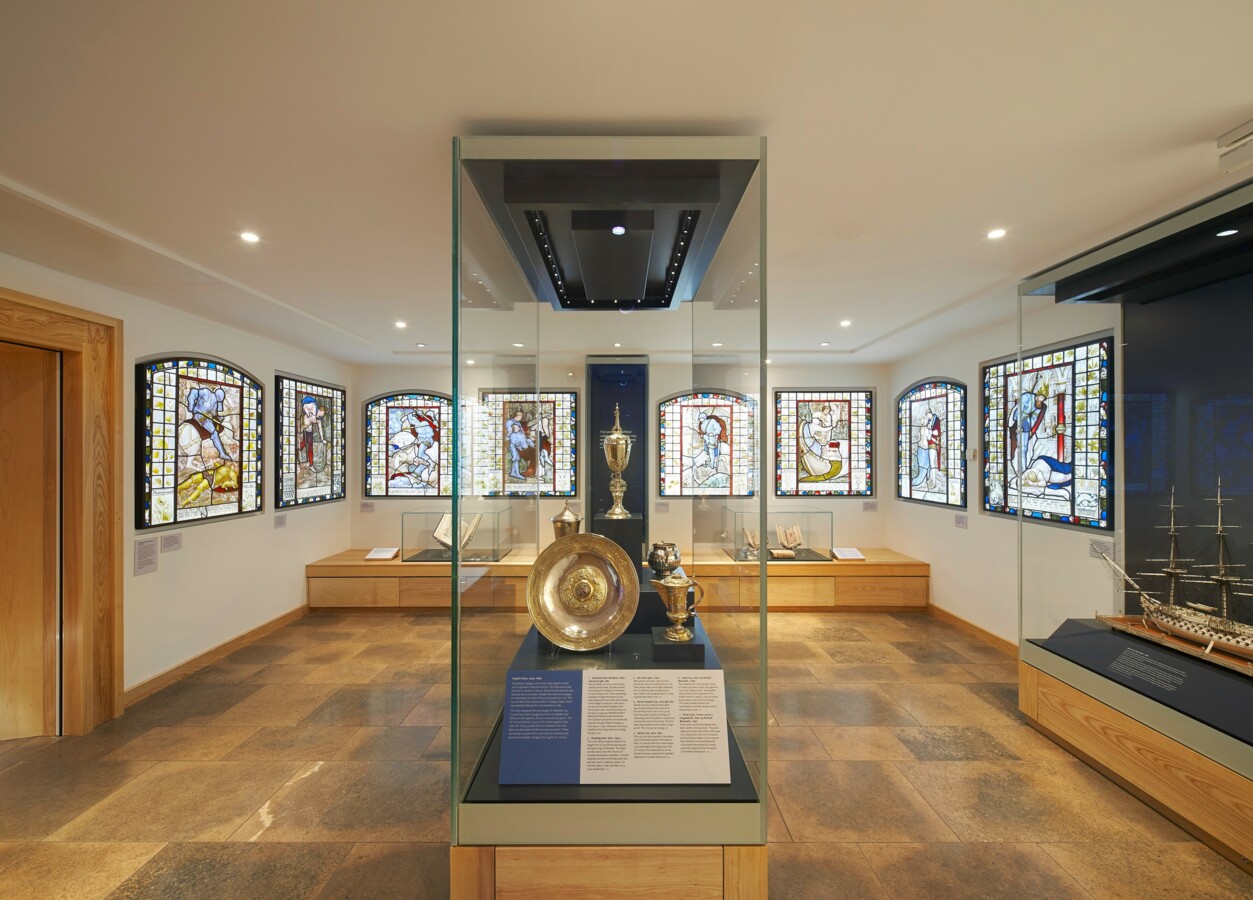
THE ANCIENT WORLD
Winchester began to collect ancient artefacts in preparation for the opening of the school’s first museum in 1897. Most of the original purchases were of Greek painted pottery, with a particular focus on Athenian vases of the 6th and 5th centuries BC. Almost a hundred examples can be seen in Treasury, alongside casts and copies of Greek and Roman sculpture as well as ancient Egyptian, Etruscan and Gandharan objects. The collection also includes about three hundred ancient coins, some of which are on display, and archaeological finds from pre-Columbian Honduras and Bronze Age Greece.
CHINESE ART
A collection of Chinese art was given to the College in 1978 by Major Montagu and Lady Eileen Duberly. The gift was made in memory of their son James, a former pupil who was killed in the bombing of the Guards’ Chapel in 1944. Among the highlights on display are Tang dynasty tomb figures, outstanding examples of early 15th-century blue and white porcelain, and ceramics made for the Qing emperors.
MEDIEVAL ART
The displays in Treasury include 14th-century sculptures commissioned by William of Wykeham for Winchester College, and a superb stained-glass window made for the abbey of Sant-Germain-des-Prés in Paris. Many other medieval works of art can be seen elsewhere around the school, and particularly in the chapel. Illuminated manuscripts from the Fellows’ Library are often exhibited in Treasury.
SILVER
Winchester has one of the most important institutional collections of early English silver, including significant pieces from the 15th, 16th and 17th centuries. The medieval Election Cup is still used each year at the admission of new scholars.
PAINTINGS AND WATERCOLOURS
François Le Moyne’s Annunciation (1727) has recently returned to the College after a decade on loan to the National Gallery in London and is now on permanent display in Treasury. Other paintings and works on paper from the school’s collection often feature in temporary exhibitions. Among the highlights of the watercolour collection are works by JMW Turner, Thomas Gainsborough, and Joseph Wright of Derby.


 Back to Archives, Libraries & Treasury
Back to Archives, Libraries & Treasury